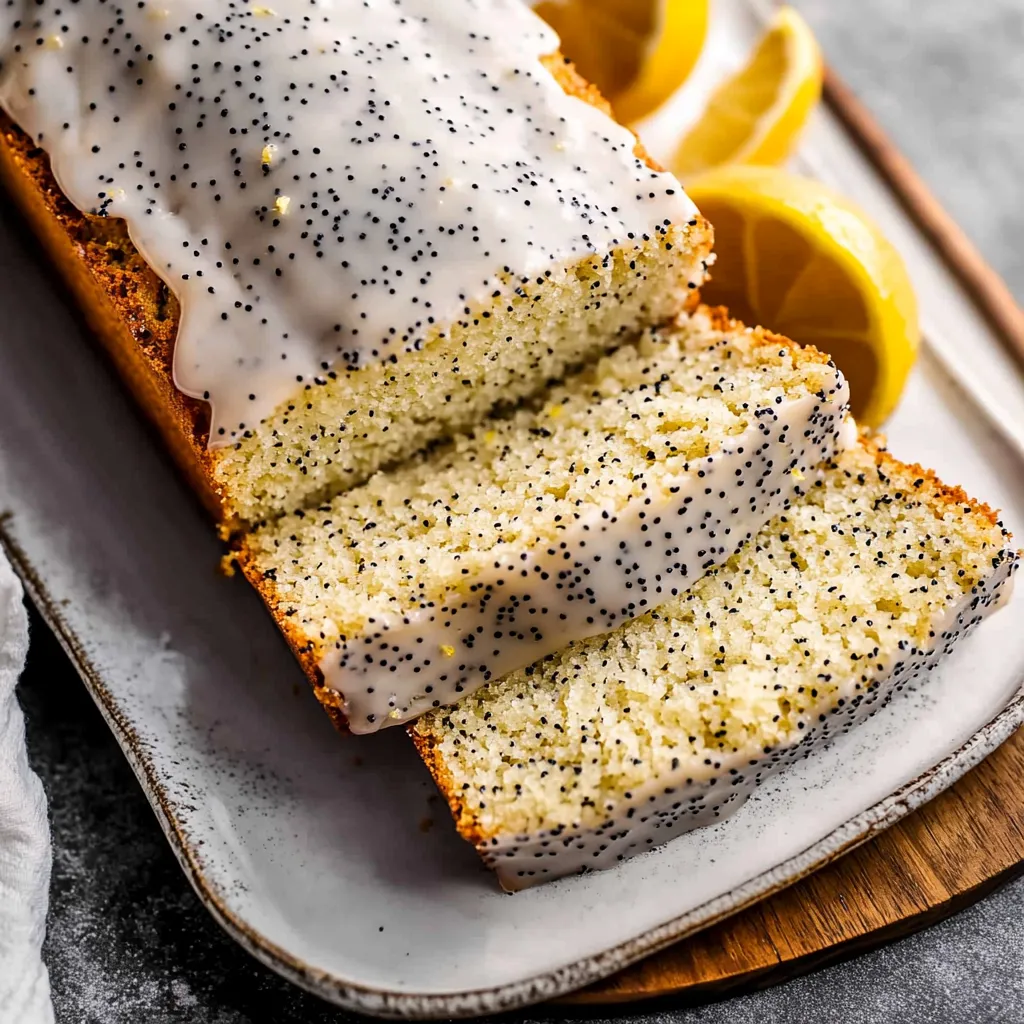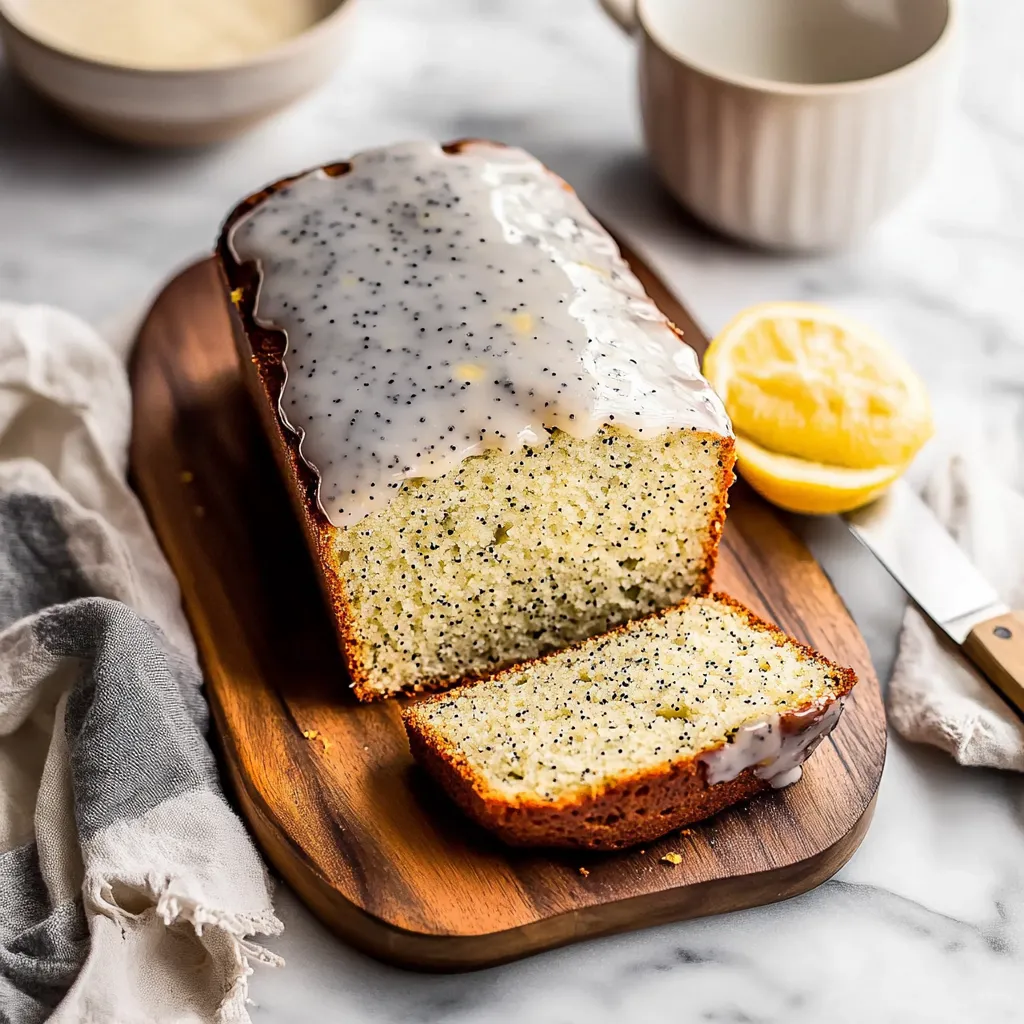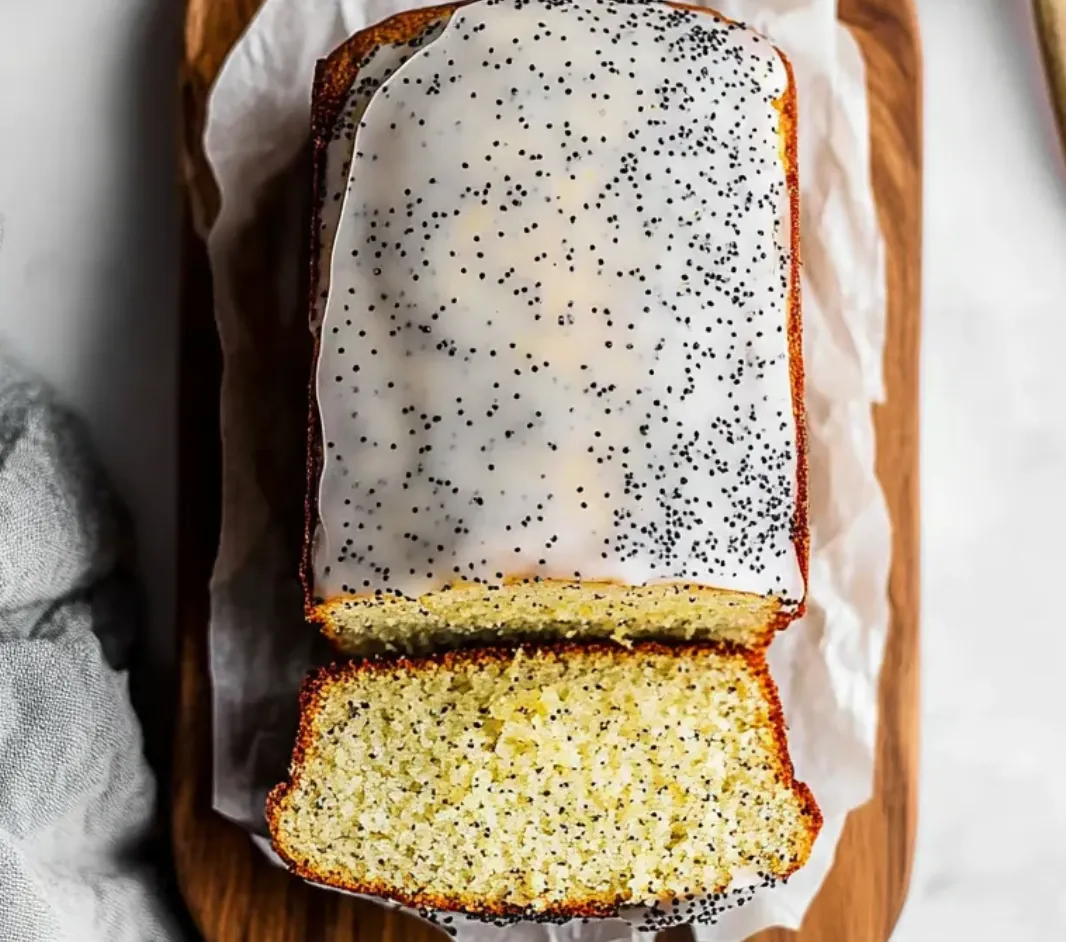 Pin it
Pin it
This vibrant lemon poppy seed loaf has been my weekend baking tradition for years, combining bright citrus flavor with delicate poppy seed crunch, all topped with a sweet-tart glaze that makes it irresistible for brunch or afternoon tea.
The first time I made this recipe was during a rainy spring weekend when I needed something cheerful. Now it's become my signature bake that friends specifically request when visiting, and I'm always happy to oblige.
Ingredients
- Unsalted butter: Room temperature ensures proper creaming with sugar for that perfect cake texture
- Lemon zest: Adds intense citrus flavor that infuses throughout the batter
- Vegetable oil: Creates moisture that keeps the loaf tender for days
- Poppy seeds: Provide delightful crunch and visual appeal against the bright yellow cake
- All-purpose flour: Gives structure while maintaining tenderness in the crumb
- Icing sugar: Creates a smooth glaze without any gritty texture
Step-by-Step Instructions
 Pin it
Pin it
- Cream the Fats and Sugar:
- Beat butter with sugar, salt, lemon zest and oil until noticeably lighter in color and fluffy in texture. This can take 3-5 minutes with an electric mixer or slightly longer by hand. This step incorporates air into the batter which helps create a tender crumb.
- Incorporate the Eggs:
- Add eggs one at a time, beating thoroughly after each addition until the mixture looks thick and well aerated. The batter should look smooth and slightly increased in volume. This builds the structure of your loaf.
- Add Liquid Ingredients:
- Pour in the milk and lemon juice, mixing until fully incorporated. The mixture might look slightly curdled at this stage due to the acid in the lemon juice, but this is completely normal and will smooth out when you add the dry ingredients.
- Finish the Batter:
- Add flour, poppy seeds and baking powder, folding gently until just combined. Overmixing at this stage can develop gluten and make your loaf tough, so use a light hand and stop as soon as no dry flour is visible.
- Prepare the Pan:
- Brush your loaf pan thoroughly with melted butter, ensuring you reach all corners and up the sides. Sprinkle with flour, then turn it over and tap firmly to remove excess. This creates a nonstick surface that helps your loaf release perfectly.
- Create the Perfect Crack:
- For that classic bakery style crack down the center, place thin slices of butter in a straight line down the middle of the batter. This inhibits rising in that specific area and encourages the loaf to split beautifully as it bakes.
- Bake to Golden Perfection:
- Bake in a preheated oven, monitoring closely at the 30 minute mark. If the top is browning too quickly, cover with foil to prevent burning while allowing the center to finish cooking. Test with a toothpick in the center to ensure it comes out clean.
- Glaze and Finish:
- Once completely cooled, whisk icing sugar with fresh lemon juice until you achieve a pourable but not watery consistency. Pour over the top of the loaf, allowing it to drip down the sides slightly, then immediately sprinkle with additional poppy seeds before the glaze sets.
The fresh lemon juice in both the batter and glaze is what makes this recipe truly special. I remember bringing this loaf to a family gathering where my grandmother, who rarely complimented anyone's baking but her own, asked for the recipe. That moment cemented this as my signature bake.
The Perfect Lemon Balance
The key to this recipe is balancing the tartness of lemon with just enough sweetness. The cake itself has a subtle lemon flavor that comes primarily from the zest, while the glaze delivers that punch of brightness that makes your taste buds tingle. If you prefer a more intense lemon flavor in the loaf itself, you can add an additional teaspoon of zest to the batter.
Storage Tips
This loaf maintains its moisture beautifully when stored properly. Once completely cooled, wrap it tightly in plastic wrap or store in an airtight container at room temperature for up to three days. For longer storage, slice the loaf first, then freeze individual portions separated by parchment paper. This allows you to thaw only what you need, and a quick 10 seconds in the microwave brings back that freshly baked texture.
Make It Your Own
While this classic recipe is perfect as written, there are several delicious variations to try. Replace the lemon with orange or lime for a different citrus profile. Add a handful of blueberries to the batter for beautiful bursts of color and flavor. For a more sophisticated version, brush the warm loaf with a lemon syrup made from equal parts lemon juice and sugar before adding the glaze once cooled.
 Pin it
Pin it
With this recipe, you'll have a bakery-worthy lemon poppy seed loaf that is sure to be a hit with everyone!
Frequently Asked Questions
- → How do I know when my lemon poppy seed loaf is done baking?
Your loaf is done when a toothpick inserted into the center comes out clean with a few moist crumbs. The top should be golden brown, and the loaf may have cracked slightly down the middle. The internal temperature should reach about 200°F (93°C). Allow it to cool in the pan for 10-15 minutes before transferring to a wire rack.
- → Can I make this lemon poppy seed loaf ahead of time?
Yes! This loaf actually improves with time as the flavors develop. You can bake it up to 2 days in advance and store it in an airtight container at room temperature. Add the glaze just before serving for the best appearance and texture.
- → Why did my loaf sink in the middle after baking?
Sinking typically happens when the loaf is underbaked, the oven temperature is too high, or the batter was overmixed. Make sure your oven is properly calibrated, test for doneness with a toothpick, and mix just until ingredients are incorporated to prevent excess air bubbles from collapsing.
- → Can I freeze this lemon poppy seed loaf?
Absolutely! For best results, freeze the unglazed loaf wrapped tightly in plastic wrap and then foil for up to 3 months. Thaw overnight at room temperature and add the fresh glaze before serving. Individual slices can also be frozen and thawed as needed.
- → What's the purpose of the butter line down the center?
The thin slices of butter placed down the center create a beautiful, even crack along the top of the loaf during baking. This happens because the butter creates a weak point in the batter as it rises and sets. While optional, this technique gives your loaf that professional bakery appearance.
- → Can I substitute the poppy seeds with something else?
Yes, you can substitute poppy seeds with chia seeds for a similar texture, or use lemon zest alone for a pure lemon loaf. For a different flavor profile, consider adding blueberries (tossed in a bit of flour to prevent sinking) or finely chopped nuts like pistachios for texture.
